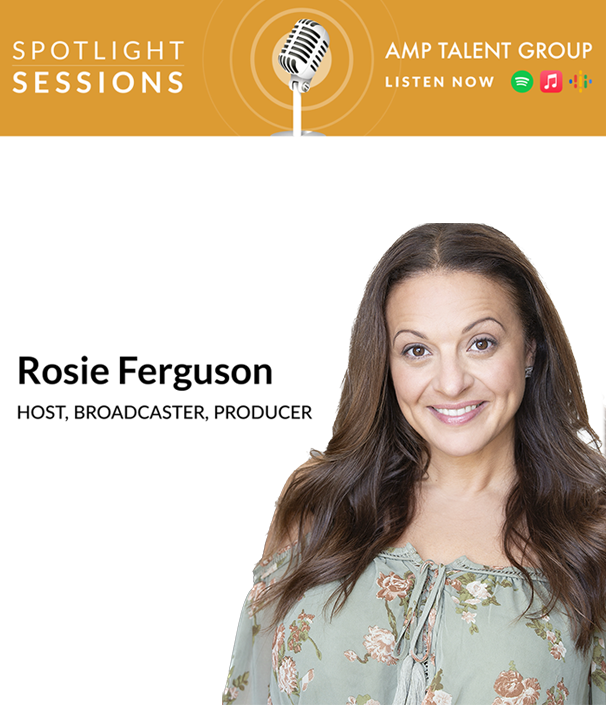Voiceover Talent 101: Start Your Career Behind the Mic

If you’ve ever been told you have a great voice, or found yourself mimicking cartoon characters or narrating lines in your head, you might already have the spark needed to become voiceover talent. But turning that spark into a career takes more than just sounding good. Voiceover work is a skill, a business, and—when done right—a fulfilling creative path that offers flexibility and freedom.
Whether you’re dreaming of voicing commercials, video games, or audiobooks, this guide will walk you through how to start your voiceover career, what makes great talent, and how to actually find paid work behind the mic.
What Makes a Great Voiceover Talent?
Contrary to popular belief, voiceover talent isn’t just about having a “nice voice.” What truly sets professionals apart is their ability to bring words to life. A great voice actor knows how to sound authentic, adapt their tone to match a script’s emotion, and stay consistent across takes. It’s about control, timing, and presence.
Think of your voice as an instrument. Can you sound cheerful, calm, or dramatic on command? Can you read a script without sounding like you’re reading? These are the questions casting directors ask themselves when choosing voiceover talent for a role. Your voice becomes the connection between brand and listener, character and audience. That’s why training, listening to other voice artists, and practicing daily all play a crucial part in building your edge.
And yes, everyone starts somewhere—even in their bedroom closet with a basic mic.
Creating a Home Studio That Works
You don’t need a fancy studio to begin your voiceover career. What you do need is a quiet space and the right setup to produce clean, professional audio. Many successful voiceover artists began with a simple home recording space—no expensive soundproof booth, just good gear and smart choices.
Start with a decent microphone. A USB mic like the Blue Yeti can work for beginners, while more advanced artists often use XLR mics like the Rode NT1 with an audio interface. Choose a quiet corner or even a walk-in closet where background noise is minimal. Surrounding yourself with clothes or foam panels can help soften sound reflections. Recording software like Audacity is free and user-friendly, while programs like Adobe Audition offer more control for advanced editing.
The key is consistency—set up your space in a way that lets you quickly jump in and record whenever a gig comes in. You’ll upgrade as you go, but the goal is to sound professional from day one.
Your First Voiceover Demo: Making It Count
If your voice is your resume, then your demo reel is your audition. This 30 to 60-second audio clip should be carefully curated to showcase your vocal range, style, and personality. It’s not about how many characters you can imitate—it’s about how well you can deliver different tones and moods authentically.
Your demo should include a few short samples of different types of reads: maybe a casual commercial voice, a more serious corporate narration, and something conversational or upbeat. Each clip should feel different, yet equally polished. And no, you don’t need to wait for real gigs to create a reel. You can record sample scripts and edit them professionally to simulate actual work. Many voiceover coaches and demo producers can help you put together a reel that gets noticed.
When done right, your demo reel becomes your calling card for casting agents, platforms like Voices.com, and talent agencies like AMP Talent Group.
Where Voiceover Gigs Really Come From
A common question we hear is, “How do I actually get hired for voiceover work?” The answer: through consistent effort, smart positioning, and a bit of patience. Voiceover talent today has more opportunity than ever, thanks to the rise of online casting platforms.
Websites like Voices.com, Voice123, and Bodalgo allow you to set up a profile, upload your demo, and audition for a variety of jobs—from animation to e-learning narration. These platforms are competitive, so it’s important to submit regularly and refine your auditions over time.
In addition to online platforms, voiceover talent often finds work through networking, email outreach to production companies, and social media visibility. You can also explore freelance sites like Fiverr and Upwork, especially for beginners looking to build experience. And once your skills are polished, you can apply to agencies like AMP Talent Group, which connect you with premium, high-paying opportunities in television, advertising, and more.
AMP Talent Group’s Voiceover Division: Launch with Confidence
When you’re ready to go from solo auditions to a fully supported career, AMP Talent Group can help you get there. Our dedicated Voiceover Division represents diverse voices for commercial, narrative, character, and animation work across North America. We help voiceover talent grow with strategy, support, and exclusive opportunities.
AMP doesn’t just submit your reel and wish you luck—we invest in your potential. From coaching and branding guidance to demo refinement and marketing support, our team makes sure you’re positioned for long-term success. We understand the power of voice in today’s media landscape, and we match talent with roles that suit their unique strengths and personality.
If you’re ready to take the next step, you can Apply Now to join our voiceover roster. Whether you’re a natural narrator, an energetic commercial read, or someone who can bring a quirky animated character to life, we want to hear you.
So, Can You Really Start a Voiceover Career From Home?
Yes—and many do. The most common concern we hear is whether someone needs a full studio setup to begin. In reality, most voiceover talent starts from a makeshift home booth. A closet with clothes and a good microphone can absolutely work as your first studio. What matters more is how you use your space and how you deliver your voice.
If you’re still unsure whether your audio is up to industry standards, record a short sample and compare it to clips on casting platforms. When in doubt, get feedback from professionals or coaches in the field.
And if you’re wondering what a good voiceover demo sounds like—remember this: it should be clear, concise, and emotionally engaging. Your voice should lead, not background music or effects. A strong demo is the bridge between your potential and your first paid gig.
Final Words: Your Voice Has a Place
Starting a career as voiceover talent is a real possibility if you’re willing to learn, practice, and market yourself. You don’t need a booming announcer voice or a studio in Hollywood—you need a clear goal, a solid demo, and the commitment to show up behind the mic consistently.
The world needs new voices for streaming ads, audiobooks, video games, podcasts, corporate content, and more. There’s room for voices of all types, tones, and accents. If you’ve got the drive, the voice, and a vision, your moment starts now.
Visit our Services page to see how we can support your growth and learn more about our dedicated team on the Our Team page. For tailor-made solutions, head over to our Get a Quote page or Book a Consultation for personalized guidance on maximizing your earning potential in this dynamic market. If you’re ready to amplify your brand’s presence now, reach out directly through our Contact Us page.
Join AMP Talent Group today, and let us help you secure the premium performance gigs you’ve been aiming for.












